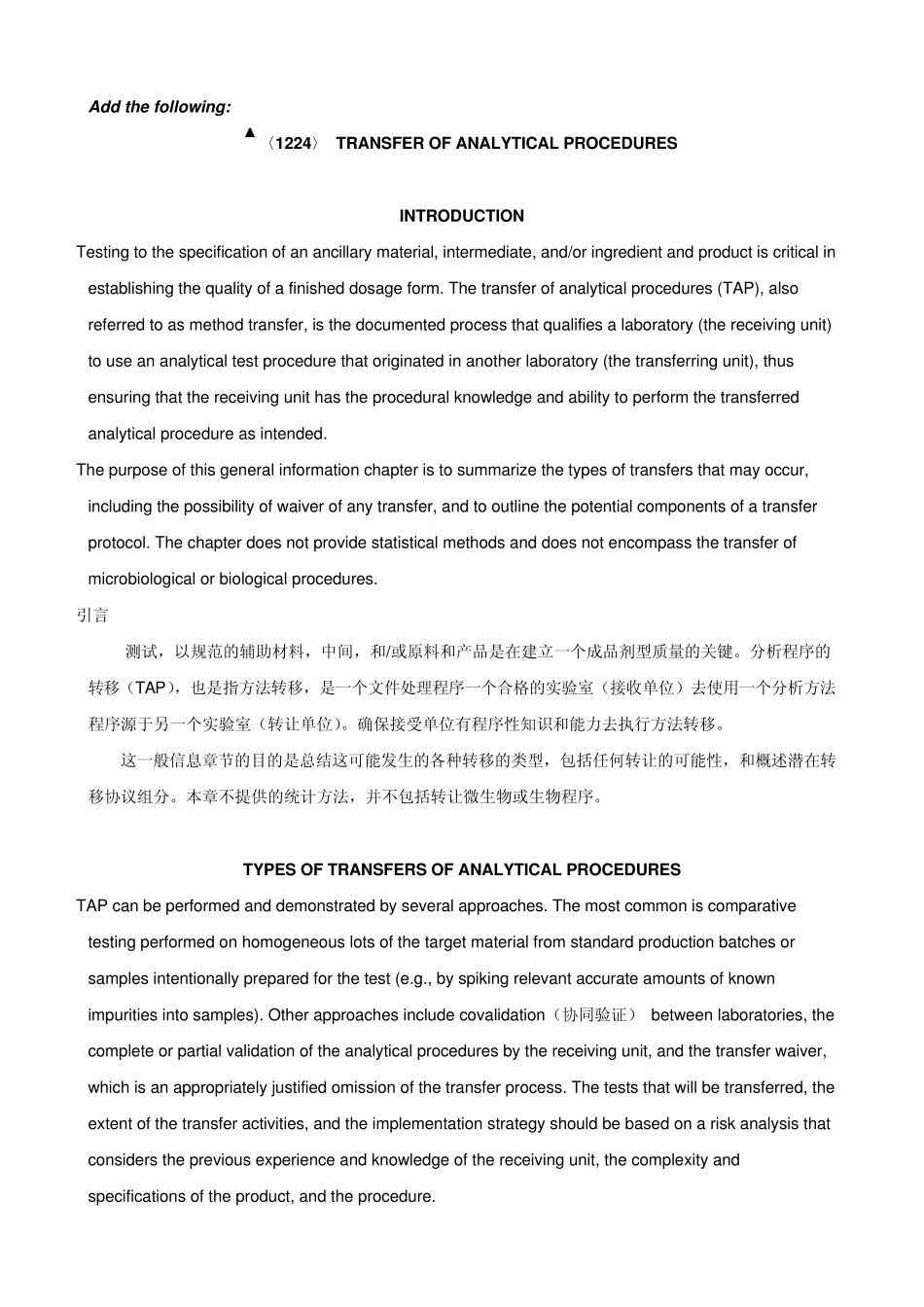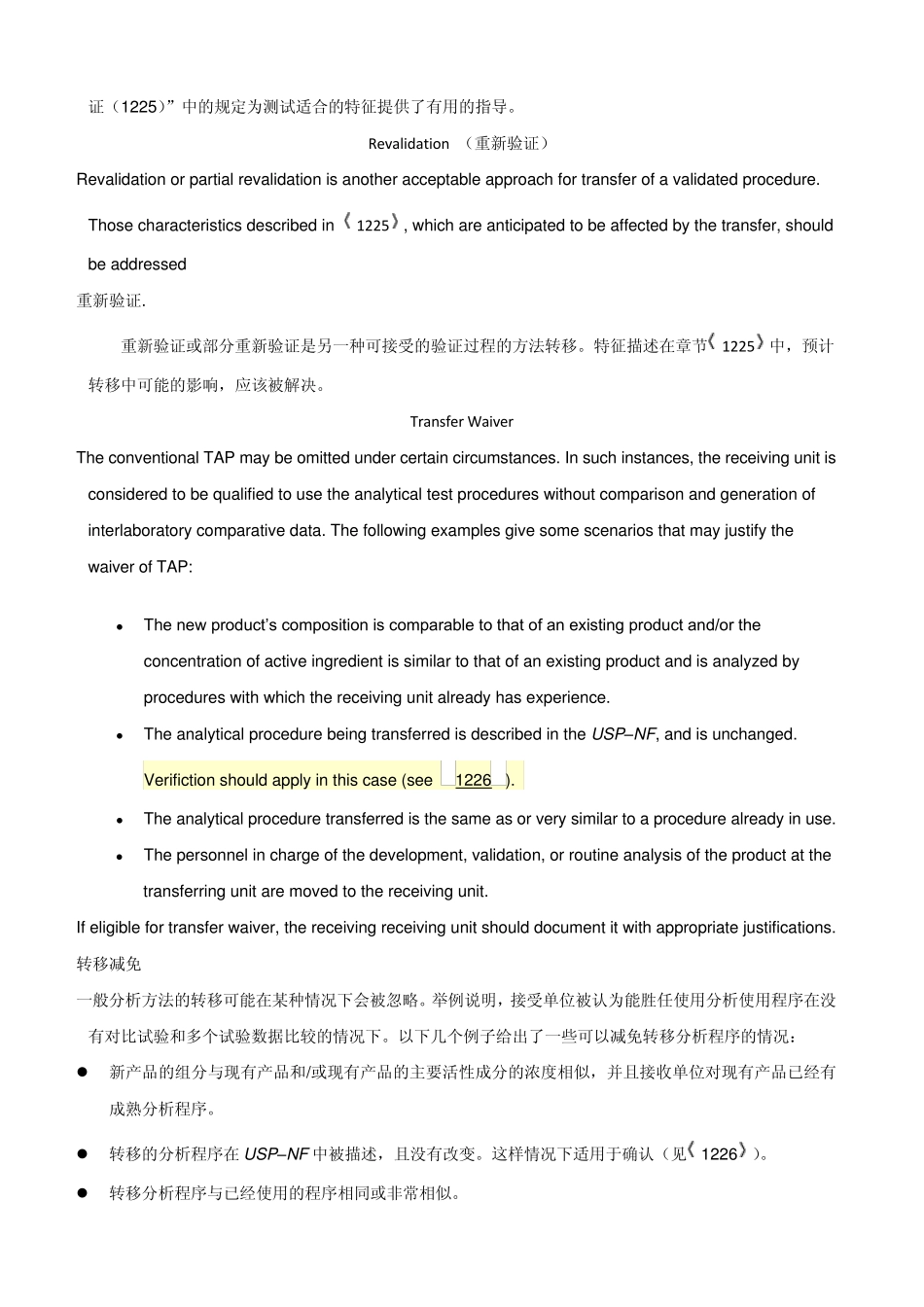Add the follow ing: 〈1224〉 TRANSFER OF ANALYTICAL PROCEDURES INTRODUCTION Testing to the specification of an ancillary material, intermediate, and/or ingredient and product is critical in establishing the quality of a finished dosage form. The transfer of analytical procedures (TAP), also referred to as method transfer, is the documented process that qualifies a laboratory (the receiving unit) to use an analytical test procedure that originated in another laboratory (the transferring unit), thus ensuring that the receiving unit has the procedural knowledge and ability to perform the transferred analytical procedure as intended. The purpose of this general information chapter is to summarize the types of transfers that may occur, including the possibility of waiver of any transfer, and to outline the potential components of a transfer protocol. The chapter does not provide statistical methods and does not encompass the transfer of microbiological or biological procedures. 引言 测试,以规范的辅助材料,中间,和/或原料和产品是在建立一个成品剂型质量的关键。分析程序的转移(TAP),也是指方法转移,是一个文件处理程序一个合格的实验室(接收单位)去使用一个分析方法程序源于另一个实验室(转让单位)。确保接受单位有程序性知识和能力去执行方法转移。 这一般信息章节的目的是总结这可能发生的各种转移的类型,包括任何转让的可能性,和概述潜在转移协议组分。本章不提供的统计方法,并不包括转让微生物或生物程序。 TYPES OF TRANSFERS OF ANALYTICAL PROCEDURES TAP can be performed and demonstrated by several approaches. The most common is comparative testing performed on homogeneous lots of the target material from standard production batches or samples intentionally prepared for the test (e.g., by spiking relevant accurate amounts of known impurities into samples). Other approaches include covalida...


